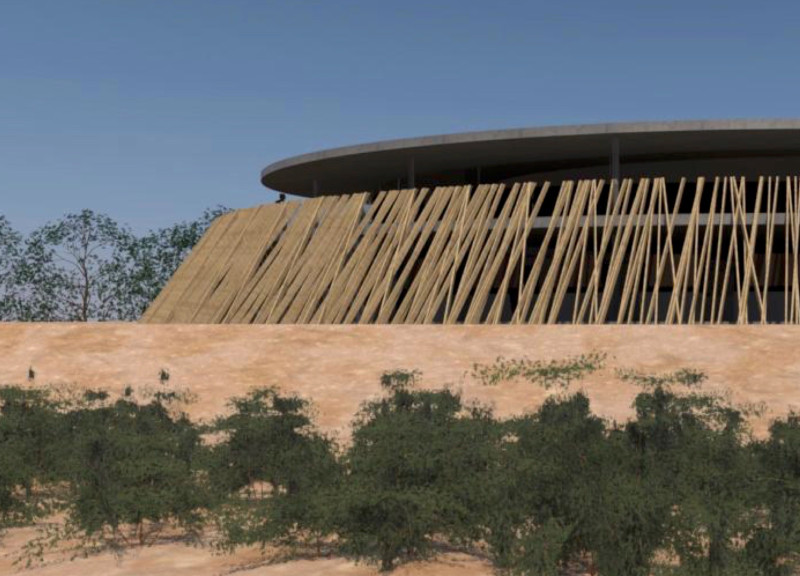5 key facts about this project
The Abu Dhabi Flamingo Visitor Centre is located within a protected nature reserve and serves as a space for both education and wildlife observation. Designed to engage visitors with the unique ecological environment, the structure blends thoughtfully into the landscape. The overall design concept focuses on a balance between functionality and visual appeal, creating a welcoming atmosphere for all who visit.
Architectural Form
The building features a two-storey oval shape with a ramp that wraps around its central core. This design encourages accessibility, allowing visitors of all abilities to navigate the space with ease. Inside, the ground floor offers a variety of functions, including display areas, washrooms, and a café, facilitating a smooth transition between activities. Upstairs, a training room, additional display spaces, and an outdoor viewing terrace extend around the building, providing wide-ranging views of the surrounding landscape.
Materiality
Concrete serves as the main material for the centre, providing strength and durability. Floor-to-ceiling glazing surrounds the core, creating open spaces filled with natural light and framing the views of the reserve. Overhanging slabs above the glazing help reduce heat and glare, improving visitor comfort. The internal walls of the core are finished with white plaster, promoting brightness and a sense of openness, while select areas are painted in various colors to highlight different functions.
Design Elements
Timber is used to create a lean-to screen that partially wraps around the building, softening its appearance and enhancing the visual character. This screen allows light to filter in while providing shade, creating a comfortable environment for visitors. The design incorporates sustainable practices, including natural cross ventilation to maintain comfortable indoor temperatures. Air conditioning support can be added where needed. Solar panels are installed on the roof to promote energy efficiency and reduce reliance on non-renewable resources.
Sustainability Features
The design emphasizes sustainability, aiming to respect the surrounding environment. By incorporating passive cooling techniques and renewable energy sources, the centre reflects a focus on minimizing ecological impact. The building aims to highlight the special qualities of its setting, enhancing the experience for visitors.
The outdoor viewing terrace invites visitors to appreciate the surrounding landscape, encouraging an appreciation of the natural world. This space creates a thoughtful balance between the built environment and nature, reinforcing the connection between people and the ecosystem that surrounds them.






















































